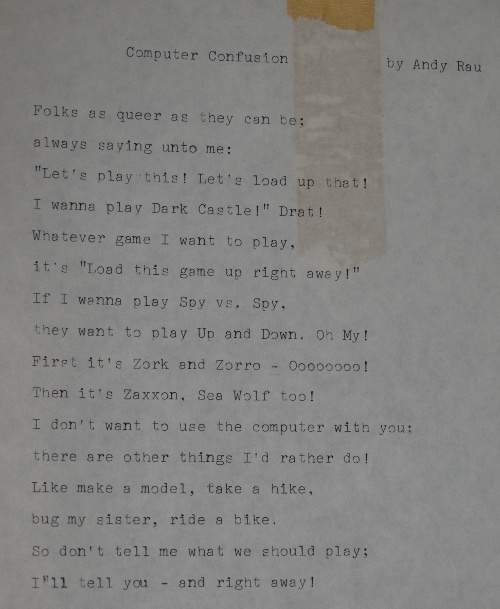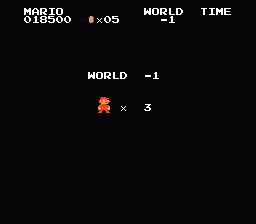I love the city of Constantinople. In bygone days, I studied Byzantine history in graduate school, and have always found the city (and its modern incarnation as Istanbul) fascinating.
I also play a lot of roleplaying games. Which means that I’ve always got my eye out for roleplaying books that reference—or better yet, detail—the city of Constantinople as the setting for a roleplaying campaign.
So are there roleplaying books about Constantinople out there? Surely, if you can buy a 700-page tome about the fantasy city of Ptolus, then somebody must have published a book that lavishes similar detail on the important real-world-historical Queen of Cities… right?
Let’s find out.

First, a Word About Historical Sourcebooks for Roleplaying Games
Historical sourcebooks for RPGs—that is, books that describe a real-world location for use in a roleplaying campaign—have always been a somewhat odd type of product.
In the roleplaying hobby, there’s a widely-held assumption that gamers overwhelmingly prefer fantastical settings over strictly historical ones. As a result, games set in historical time periods and places almost invariably add a layer of fantasy, magic, alt-history, or the supernatural on top of the history. Sometimes the fantastic elements are so strong that the setting only marginally relates to real history (as in Deadlands).
There are a lot of reasons for this and it’s an interesting topic. But one obvious point is that real historical information about most places and times is readily available to anyone with access to Wikipedia. This was less true decades ago before the internet; but even back then, you didn’t want to spend your hard-earned money on a gamebook mostly filled with information you could find in any history book on the topic. You also don’t want a gamebook that feels like a boring history textbook (well, I want that, but I assume most other people don’t). You want something extra, and most games supply this in the form of supernatural horror or fantasy integrated into the real-world stuff.
What’s the right balance between providing comprehensive historical information, and giving players tools to bend the setting in the non-historical direction of their choice? Many game writers have tried to find that balance.
These challenges have led to a situation where there just aren’t very many purely straight-history roleplaying games or sourcebooks out there. The heyday of this type of gamebook is probably the 1980s and 1990s—not coincidentally, the age of GURPS 3rd edition. But we’ll get to that later.
Are There Game Books about Constantinople?
It turns out that there are!
The earliest game books in my library that reference Constantinople are these:
- The Crusades Campaign Sourcebook (1994) for AD&D 2nd edition references Constantinople, although not in any detail. This book is remarkable for being one of a small handful of historical sourcebooks published officially for Dungeons and Dragons–something that was tried briefly in the 1990s and never again since. I mostly include it here because it describes a campaign setting that is at least adjacent to Constantinople. (It only covers the first three crusades in detail—it comically and accurately sums up the later crusades, one of which very directly involves Constantinople, as “elaborate fiascos noted almost entirely for their religious intolerance, visceral greed, and senseless destruction.”
- I was hoping that we’d get some hints of early Constantinople as a game setting in GURPS Imperial Rome, but it’s only briefly referenced in a short biography of Constantine. Fair enough, given the book’s title and focus.
Those are books with minor references to Constantinople. What about books specifically dedicated to the city? Believe it or not, we have quite a few!
Constantinople by Night (White Wolf, 1997)

Constantinople would be a fantastic haunt and hunting ground for vampires, and clearly somebody else agreed with me, because in the late 90s this book was released for the Vampire: The Dark Ages game line.
White Wolf published a large number of [City] by Night sourcebooks through the 90s. This series of game books was not renowned for its historical, geographic, or linguistic accuracy—I think the charitable way of putting it would be that White Wolf prioritized mood, theme, and aesthetic over historical accuracy or grammatically-correct Latin. And this book is all about theme!
This 130-page sourcebook describes Constantinople in 1197 CE as a vampire would have experienced it, right before the Fourth Crusade engulfs the city in destruction. The mood is melancholy and apocalyptic, as if everyone (or at least, all the vampires) can sense that a Golden Age is about to come crashing down.
Vampire-specific lore is very heavily mixed in with real-world history and culture in this book, to the point that it’s hard to imagine getting much out of this if you aren’t playing Vampire. That said, there is a 25-page tour of major city locations; there’s plenty of vampire lore mixed in there, but I could see it being an inspirational read for any horror-themed game set in Constantinople.
This is a very fun and evocative book to read, enough so that I can almost recommend it even if you aren’t a Vampire player. But there’s little that isn’t mixed in with vampire lore and so its usefulness for other games is very limited.
The Sundered Eagle: The Theban Tribunal (Atlas Games, 2011)

The Ars Magica RPG has a reputation for historically rigorous sourcebooks, and this is no exception. As with Vampire’s take on Constantinople, this sourcebook has a lot of gameline-specific lore mixed in with its real history—in this case, it’s wizards instead of vampires who are adventuring in Byzantium. But this sourcebook has a lot more game-able information about Constantinople and Byzantium that would be useful in other games.
The Sundered Eagle is “set” in 1220, in the aftermath of the Fourth Crusade. (This is proving to be a popular time to game in Constantinople. It makes sense, but there’s like… many other exciting years that could be explored!) As a book about the Byzantine world in general, this book has a lot of really useful information about culture, politics, and religion that would be useful whether you’re playing Ars Magica or not. While some of the historical information is stuff you could glean from Wikipedia or a history book, it does a good job of calling out particularly game-relevant stuff about the setting that might not come through in a straight history: info about mobs in Constantinople, for example, or common superstitions and worldviews held by people in this era. About ten pages are devoted specifically to Constantinople.
There’s a lot in this book that is wizard-specific. But I would still recommend it for a historical campaign set in the Late Antique Mediterranean world. Yes, if you’re not playing Ars Magica, you will have to ignore or weed out a lot of this book. But I would still say that this is a great example of a book that gets the “historical accuracy vs. fantasy stuff” balance right.
GURPS Hot Spots: Constantinople, 527-1204 (Steve Jackson Games, 2012)
OK, I don’t own this one. But on the strength of other GURPS historical sourcebooks, I can’t imagine this isn’t worth investigating. It’s only 50ish pages, which feels a little slight given the time period being covered. But I appreciate the expansion of the timeline beyond the Fourth Crusade.
If you’re interested, go buy this, read it, and let me know how it is!
Horror on the Orient Express (Chaosium, originally published in 1991; this is the 2014 Kickstarted revision)

This is a mega-campaign for the Call of Cthulhu RPG. It takes place across the entirety of the Orient Express railroad path, but it does have several individual scenarios set in Constantinople past and present. The historical scenarios are presented as flashbacks that the players can experience.
- “Sanguis Omnia Vincet” takes place in 330; the players are elite soldiers serving under Constantine.
- “The Dark Crusader” is set in Constantinople in the familiar Fourth Crusade time period (it actually takes place during the sack of the city in 1204!).
- “By the Skin of the Teeth” is set in 1923 Constantinople.
- “The Simulacrum Unbound” takes place in modern-day Istanbul.
There’s something fascinating about the idea of dipping into Constantinople at different points in history—a committed gamemaster could do a lot with how the city does and doesn’t change over the centuries.
These are all compelling scenarios, but they aren’t easily disentangled from the specific Call of Cthulhu campaign they’re part of. Each scenario contains some setting information about Constantinople/Istanbul, but it’s mostly restricted to information that will come up in the specific scenario.
Which means Horror on the Orient Express isn’t a good general sourcebook on the City. But hey, if you’re running this campaign, you could expand these scenarios with information from some of the other books in this list!
Mythic Constantinople (The Design Mechanism, 2017)

This is the gold standard of roleplaying books about Constantinople. Although the word “mythic” is in the title, there’s more than enough here to run a strictly historical campaign. There’s lots about both the City and the Byzantine world in general. The default setting is 1450, later than the other books in this list. It’s got lots of info about religion, politics, war, factions, and just everyday life. It puts a special emphasis on creating believable characters in the setting.
While it’s written specifically for the Mythras RPG, that game system—based on the d100 Basic Roleplaying engine—is one of the most “generic” systems in the hobby, and thus easily converted to the system of your choice.
I really can’t praise this one enough.
Honorable mention: Constantinople in other game books
Constantinople pops up as a presence in a few other books.
- The Last Days of Constantinople: Roleplaiyng in the Byzantine Empire (Avalanche Press, 2003) is an adventure that came out in the heady days of the “d20 bubble” and lets players of D&D 3rd edition experience the fall of Constantinople to the Turks in 1453. I haven’t read this one! It looks more like a single adventure than a sourcebook on Constantinople, but my curiosity is piqued.
- The Dracula Dossier campaign for Pelgrane Press’s Night’s Black Agents is a world-spanning campaign that might involve visiting modern-day Istanbul, so there’s a bit of Istanbul information in that book. There’s also a scenario in The Edom Files that is set partly in late-19th-century Constantinople. Neither provides anything like an exhaustive depiction of the City, though.
- It’s my understanding that Achtung Cthulhu’s “Zero Point” campaign takes players to World War 2-era Istanbul—but since I don’t own this, I can’t confirm it.
- There are plenty of fantasy settings that include cities or regions inspired by, or based on, Constantinople and Byzantium. The Al-Qadim, Golarion, and Glorantha settings all have regions that I suspect are meant to evoke this. But that’s speculative, and something to be unpacked in a future post.
In summary
I hope you’ve enjoyed this tour of Constantinople as found in roleplaying games! This isn’t an exhaustive list; it’s just items that have found their way into my collection and/or awareness. I am 100% certain that I’ve missed some good Constantinople source material. Let me know in the comments below what I’ve missed!





 The internet, in its all-seeing wisdom, has of course
The internet, in its all-seeing wisdom, has of course